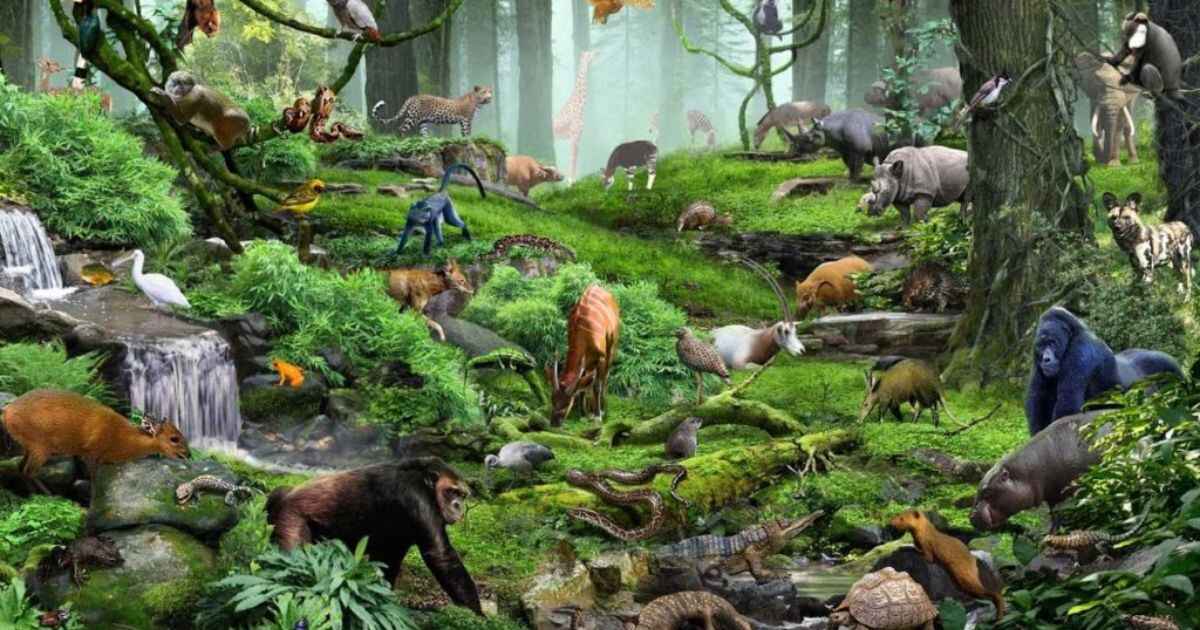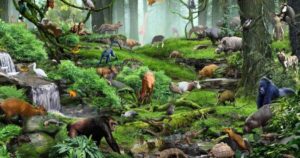Animals of the Forest:
- Rabbit: Common sight in forests, providing meat and fur for crafting.
- Bird: Abundant in forests, offering feathers for crafting arrows and weapon upgrades.
- Lizard: Plentiful and easy to hunt, with skin useful for armor and meat for meals.
- Boar: Common in the northwestern forest, providing resources like skin for crafting.
- Crocodile: Found near rivers and lakes, a medium-strength predator with valuable resources.
- Great White Shark: A common ocean predator with high attack strength, challenging encounters for divers.
- Deer: A forest-dwelling animal with various uses and significance in the ecosystem.
These animals play crucial roles in the forest ecosystem, from providing food and resources to maintaining balance within their habitats.
Animals of the Forest
Animals in the forest encompass a diverse range of species, including the African forest elephant, okapi, sugar glider, tiger quoll, and various monkeys and birds like the great hornbill and harpy eagle
1. Forests provide habitats for over 6,700 animal species and 4,700 plant species, offering food, shelter, and breeding spots for wildlife
2. Forests are divided into layers: forest floor hosting insects and small mammals, herbaceous layer with insects, shrub layer sheltering birds and small mammals, and tree layer where birds nest and mammals like squirrels reside
3. Germany’s forests cover 32% of the land surface and host trees reaching up to 131 feet in height
4.In addition to the rich biodiversity found in forests, they play a crucial role in maintaining ecosystems by providing water reservoirs, soil protection, climate regulation, and oxygen production
5. Forests are named based on tree types like broadleaf or conifer forests and can be classified by geographic location or climate conditions
6. Forest animals range from predators like wolves to smaller creatures like hedgehogs and mice that thrive in different forest layers
7. The forest ecosystem is a delicate balance where each animal occupies a unique niche contributing to the overall health of the environment.
Forest Fact File

Forests cover about 31% of Earth’s land area and are home to over 80% of terrestrial species. They play a crucial role in maintaining biodiversity, regulating climate, and providing essential resources for both wildlife and humans.
Species Living in Forests
In forests, you can encounter a rich tapestry of animal species, from elusive predators like the cougar to tiny insects like ants. Some common forest dwellers include deer, squirrels, owls, and bears, while rare sightings might include lynxes, bobcats, or even elusive species like the wolverine.
A Forest Provides Animals With
- Food and Shelter: Forests offer a buffet of fruits, nuts, insects, and small mammals for animals to feed on. Trees provide shelter from predators and harsh weather conditions.
- Opportunities for Reproduction: Many animals rely on specific forest habitats for breeding and raising their young.
- Protection: The dense foliage of forests offers camouflage and protection for animals to thrive.
A Forest Provides the Environment With
- Carbon Sequestration: Trees absorb carbon dioxide from the atmosphere, helping mitigate climate change.
- Soil Conservation: Tree roots prevent soil erosion and maintain soil health.
- Water Filtration: Forests act as natural filters, purifying water sources and maintaining water quality.
Forests Are Divided into Layers

Forests are structured into distinct layers based on plant height and density, each supporting unique flora and fauna.
- Forest Floor: This layer is home to decomposers like fungi, insects, and small mammals that play a crucial role in nutrient recycling.
- Herbaceous Layer: Plants like ferns and wildflowers dominate this layer, providing food and habitat for various insects and small animals.
- Shrub Layer: Shrubs offer cover for birds and small mammals while contributing to the overall biodiversity of the forest.
- Tree Layer: Towering trees form the canopy where birds nest, squirrels leap, and countless other creatures find refuge.
Interesting Facts about Trees in the Forest
- Tree Adaptations: Trees have evolved unique features like buttress roots for stability in dense forests or thin leaves for efficient light absorption.
- Tree-Animal Relationships: Birds nest in tree branches, squirrels cache nuts in tree hollows, showcasing the intricate connections between trees and animals.
Final Words
Forests are not just landscapes; they are intricate ecosystems where animals play a vital role in maintaining balance. By understanding and appreciating the diversity of animal species in forests, we can better protect these habitats for future generations to enjoy. Let’s continue to explore this fascinating world together!
All Knowledge Categories









